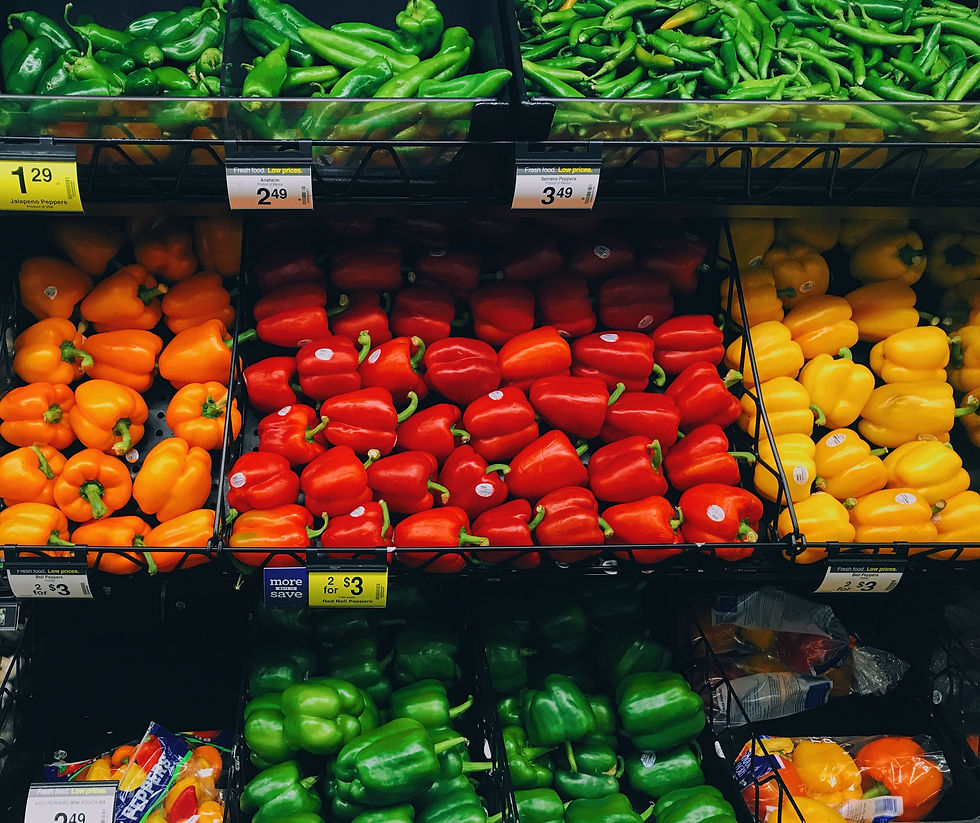The Art of Real Food Shopping: Navigating Grocery Stores and Decoding Food Labels
“Don't eat anything your great-grandmother wouldn't recognize as food.” ― Michael Pollan

You look in the fridge and it is empty. Ugh! Now it is time to go to the grocery store. What's on your grocery list? How much of your food is actually...real? As you navigate buying food, it is vital to understand what you are buying. With so many options for processed foods and misleading marketing claims, shopping for real, nourishing food can sometimes feel like a daunting task. However, with a little know-how and some savvy shopping strategies, you can fill your cart with wholesome ingredients that support your health and well-being. In this blog post, we'll explore tips for navigating the grocery store aisles and deciphering food labels to make informed choices about the foods you buy.
Understanding Real Food
Real food is simple, whole, and minimally processed, free from artificial additives, preservatives, and refined ingredients. It's food in its most natural state, as close to its source as possible. Think fresh fruits and vegetables, whole grains, lean proteins, and healthy fats like nuts. By prioritizing real foods, you can nourish your body with the nutrients it needs to thrive while minimizing your intake of potentially harmful additives and chemicals.
Navigating the Grocery Store
When it comes to shopping for real food, it's essential to approach the grocery store with a plan and a discerning eye. Start by sticking to the perimeter of the store, where you'll find fresh produce, meats, dairy, and whole grains. These whole foods are typically located on the outer edges of the store, while processed and packaged foods tend to dominate the center aisles. By focusing on the perimeter, you can prioritize real, nutrient-dense ingredients and minimize exposure to processed foods.

Reading Food Labels
Deciphering food labels is key to making informed choices about the foods you buy. While the front of packaging may boast enticing health claims and flashy marketing slogans, it's essential to turn the product over and examine the ingredient list and nutrition facts panel for a more accurate picture of what you're consuming. Here are some tips for reading food labels effectively:
Check the Ingredient List: Ingredients are listed in descending order by weight, with the most abundant ingredient listed first. Look for products with simple, recognizable ingredients and avoid those with a long list of artificial additives, preservatives, and sweeteners. My personal rule is that if an ingredient list has more than 5 ingredients mixed in with chemical names that are difficult to pronounce/read, it is not real food!
Watch for Hidden Sugars: Sugar hides under many different names on food labels, including high-fructose corn syrup, dextrose, maltose, and more. Be wary of products that contain multiple forms of added sugars, as excessive sugar consumption can contribute to a range of health issues.
Pay Attention to Serving Sizes: The serving size listed on the nutrition facts panel may not always reflect how much you actually consume. Be mindful of portion sizes and adjust the nutritional information accordingly to avoid overconsumption of calories, sugar, and other nutrients.
Look for Whole Grains: When choosing grain products like bread, pasta, and cereal, opt for whole grain varieties that contain the entire kernel, including the bran, germ, and endosperm. Whole grains are rich in fiber, vitamins, and minerals, making them a nutritious choice for your diet.
Mindful of Sodium and Fat Content: Keep an eye on the sodium and fat content of packaged foods, as excessive consumption of these nutrients can contribute to health problems like high blood pressure and heart disease. Choose products with lower sodium and saturated fat content whenever possible.

Shopping for real food and deciphering food labels doesn't have to be complicated. By prioritizing whole, minimally processed ingredients and paying attention to food labels, you can make informed choices that support your health and well-being. Remember to stick to the perimeter of the grocery store, focus on simple, recognizable ingredients, and be mindful of hidden sugars, serving sizes, and nutrient content. With these tips in mind, you can fill your cart with nourishing foods that fuel your body and nourish your soul.
Prayer About Healthy Choices
Dear Heavenly Father,
God, thank you for creating my body to be healthy. Thank you, too, for knowing it's difficult for me to make healthy food choices all the time. You promise your help in every situation when I'm tempted to eat the wrong things.Help me, God, to (step away, substitute, or start over), so I can glorify you with all my health and strength.
Prayer Citation: https://www.prayerideas.org/health-food-choices-prayer/#:~:text=Healthy%20food%20choice%20prayer%3A,to%20eat%20the%20wrong%20things.

















Comments